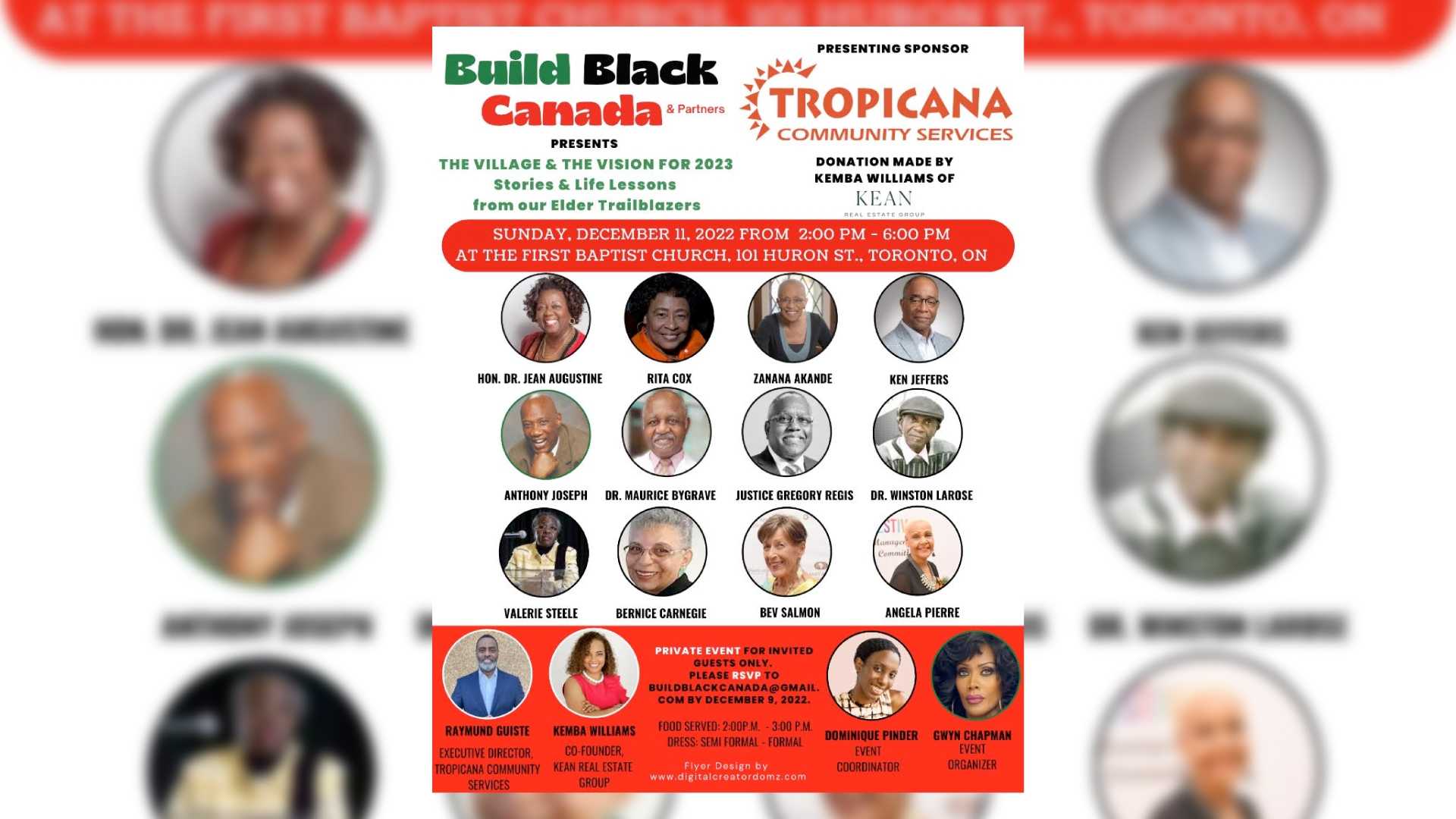BY PAUL JUNOR
Gwyn Chapman hosted the Village and Vision event on Sunday, December 11th, 2022, that honoured several Black elder trailblazers. It was coordinated by Dominique Pinder at the historic First Baptist Church, and was sponsored by Tropicana Community Service and Kean Estate Group.
Gwyn introduced some of the members of the audience who were involved in doing remarkable things in the Black community. She asked each of the Black elders to share their individual story and noted that Dr Winston Larose could not attend.
Valarie Steele, activist and member of BADC shared stories about the importance of the Black community. She states, “I have been one of those in the community, who have been doing things for you.” She continues, “We paid attention to what was happening around us, because I can tell you, that everything that you hold dear would not be if we did not pay attention.”
Marjorie Taylor, a community volunteer with United Achievers in Brampton talked about the importance of volunteerism. She states, “I would like to see more volunteerism among our youths, because they should know that they are not only helping others but they gain something in return.”
Dr Maurice Bygrave, a Jamaican-born dentist, and one of the founding members of Caribana spoke about how the Black community came together and organized the first Caribbean festival. Many individuals provided their own funds for this event.
Dr. Rita Cox, internationally renowned storyteller, community icon, and former librarian mentioned that she had a feeling of optimism for the community. She was thankful to the Toronto Public Library for the role it played in her success over the years.
The Honourable Dr. Jean Augustine, the first Black female elected to the House of Commons, spoke about the importance of demonstrations and protests in the 1960s that helped the Black community. She noted that this was vital in the fight for social justice.
Zanana Akande, the first Black female cabinet member in the NDP Government of Bob Rae spoke about her life in politics. She mentioned that she chose to focus on three issues that were important to her: education, equity, and geriatric care.
Bev Salmon, the first Black councillor in the City of Toronto spoke about her experience of racism as a child and adult. She talks about the role she played in the development of the African Heritage program. She states it seeks to foster, “A sense of belonging, and a sense of self-worth.” She noted that her passion was to get the curriculum integrated in order to reflect the experiences of Black people.
Bernice Carnegie, co-founder of the Herbert H. Carnegie Future Aces Foundation noted, “I stand on the shoulders of my father and mother.” She spoke about the values that her dad taught. She mentioned that she started a new organization the “Carnegie Institute for Acceptance and Inclusion in Hockey,” and they had their first meeting in Boston.
Justice Gregory Regis, former Judge of the Ontario Court of Justice, spoke about his life in St.Lucia. He came to Canada to study at Ryerson University and later returned to attend law school. He described his years of activism in the Jane and Finch community.
Angela Pierre, a member of the board of the FMC, talked about the importance of the Caribbean festival to the community. She mentioned the Building Black Entrepreneurs Program as a tool to build financial empowerment and business entrepreneurial skills
Ken Jeffers, founder of the Harriet Tubman Centre mentioned it is important to be a pro activist in order to prevent some of the problems from occurring. He recalled the impact of the African-centred program there, which had a success rate of 92%.

